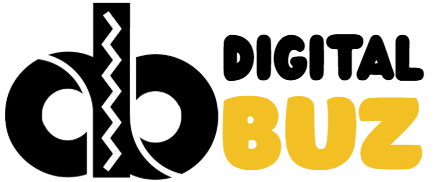Introduction: What Is a Hoverboard?
Hoverboards are sleek, self-balancing electric scooters that have taken the world by storm as a mainstream mode of personal transport. Although they do not hover, they achieve a floating sensation by riding on two wheels. They are fun, convenient, and futuristic-looking gadgets.
Whether you commute short distances, ride around your neighborhood, or just play, hoverboards are an exciting means of transportation.
1. A Brief History of Hoverboards
Hoverboards flooded the mainstream in 2015. They started trending in China and soon moved to Europe and North America. Celebrities, YouTubers, and influencers made them trendy. They became popular for their futuristic appearance and peculiar way of moving, which both children and adults found appealing.
The initial models had safety concerns such as battery fires. After that, manufacturers enhanced design quality and safety certifications, and hoverboards became more dependable.
2. How Hoverboards Work
Hoverboards operate through gyroscopic technology and sensors to balance. Here’s how they do it:
Motors: Each wheel has an electric motor.
Gyroscopes and sensors: They sense the weight and location of the rider.
Battery: A rechargeable lithium-ion battery supplies the motors.
Control logic: The board reacts to body weight changes to go forward, in reverse, or turn.
To go in the direction, slightly lean towards it. To reverse or stop, lean your weight in the opposite direction. Turning requires more pressure on one foot.
3. Hoverboard Types
Hoverboards are available in different designs and specifications. Some of the common types are:
Standard Hoverboards
These are standard two-wheeled models with 6.5-inch wheels. Suitable for plain roads and beginners.
Off-Road Hoverboards
Fitted with bigger wheels (8.5 or 10 inches) and durable tires. They provide a good ride on grass, gravel, or rough ground.
Bluetooth Hoverboards
Are fitted with Bluetooth speakers inside, so you can listen to music as you ride.
Hoverboards with LED Lights
Have multicolored lights on wheels and frames. They enhance visibility and look cool.
4. Key Features to Find
When selecting a hoverboard, look for the following features:
Wheel Size
- 6.5 inches: Suitable for smooth pavement.
- 8.5 inches and larger: Ideal for more rugged surfaces and outdoor riding.
Speed and Range
- Most hoverboards have a speed of 6–10 mph.
- Range is 7 to 15 miles, depending on the battery size.
Weight Capacity
- Typical models can carry up to 220 lbs.
- Heavy-duty models can carry over 265 lbs.
Battery Life and Charging Time
- Standard battery lasts 1 to 2 hours.
- Charging time is 2 to 4 hours.
Safety Certifications
For safety, search for UL 2272 certification. This provides fire and electrical safety.
App Connectivity
A few hoverboards link to mobile applications.
Apps can monitor speed, battery condition, and distance covered.
5. Safety Tips for Hoverboard Users
Hoverboard riding can be entertaining but dangerous if safety is not the top concern. Here are a few tips:
- Wear Protective Gear
- Wear a helmet at all times.
- Utilize wrist guards, elbow pads, and knee pads.
- Check the Surface
- Steer clear of wet or uneven ground.
- Be cautious when passing traffic or congested areas.
- Learn Slowly
- Practice in open spaces prior to riding close to roads.
- Master turning and balance before trying tricks or speed.
- Stay Alert
- Do not wear headphones while riding.
- Avoid pedestrians and obstacles.
6. Best Places to Ride a Hoverboard
Hoverboards perform well in places with flat, dry surfaces. Suitable locations are:
- Sidewalks
- Vacant parking lots
- Bike paths (if permitted)
- Skate parks
- Driveways and private roads
Check local legislation. Hoverboards are forbidden in some cities in public places or roads.
7. Hoverboard Maintenance Tips
Taking care of your hoverboard prolongs its life. Here’s how:
- Keep it Clean
- Wipe with a damp cloth after use.
- Do not use harsh chemicals or water.
- Check Tire Pressure
- For air tires, maintain correct pressure.
- Solid tires must be crack- or damage-free.
- Store Properly
- Store indoors, where it is dry.
- Do not store in direct sunlight.
- Update Firmware
- If your hoverboard model has an app, update firmware.
These updates can enhance performance and safety.
8. Hoverboards for Kids vs. Adults
Various models are appropriate for different ages:
- Children
- Smaller wheels
- Lower speed level
- Lightweight design
- Adults
- Larger wheels and more power
- Higher weight capacity
- Longer-lasting battery
Select age-suitable options. Children must be accompanied by adults while using.
9. Environmental Effect of Hoverboards
Hoverboards are electric and pollution-free while in use. Battery production and disposal, however, can have a negative effect on the environment.
Tips to minimize impact:
- Recycle batteries correctly
- Purchase models with environmentally friendly packaging
- Use energy-efficient charging
10. Best Brands and Models Available
Here are some well-known and trustworthy hoverboard brands:
- Segway Ninebot
- Halo Rover
- Gyroor Warrior
- TOMOLOO
- Swagtron T6 and T580
Research reviews and warranty options prior to purchasing. Quality is important.
11. Common Problems and Troubleshooting
If your hoverboard isn’t functioning right, try the following suggestions:
- Hoverboard Won’t Turn On
- Look to the battery.
- Examine the charger and connection.
- Hoverboard Beeping
- This can mean it needs to be recalibrated.
- Check your manual and reset it.
- Uneven Balance
- Experiment with recalibrating.
- Ensure both footpads function properly.
12. Personalizing Your Hoverboard
Personalize your hoverboard by customizing:
- Decals or stickers
- LED light strips
- Wheel covers
- Custom skins or wraps
- Ensure changes don’t affect safety or warranty.
13. Legal Considerations and Regulations
- Laws regarding hovers vary by region:
- In some areas, riding on sidewalks is not allowed.
- There might be speed limits or age restrictions.
- Schools and shopping malls can prohibit them on premises.
- Verify your local ordinances before using in public places.
14. Future of Hoverboard Technology
Hoverboard technology keeps advancing. Improvements in the future might involve:
- More battery life
- Brainier AI-guided navigation
- Self-charging systems
- More sophisticated safety features
Certain companies work on hoverboards that actually hover, but these are still in prototype form.
Conclusion: Should You Get a Hoverboard?
Hoverboards provide a pleasant, innovative means of covering short distances. They combine technology and fun with functionality. Whether you’re purchasing one for commuting, leisure, or as a present, knowing the features and safety precautions ensures that you make the best decision.
From discovering how they operate to selecting the ideal model, the following guide has everything you need. After you’ve selected the right board, practice and maintenance guarantee a smooth and safe ride. Hoverboards are here to stay—and the ride’s just beginning.


